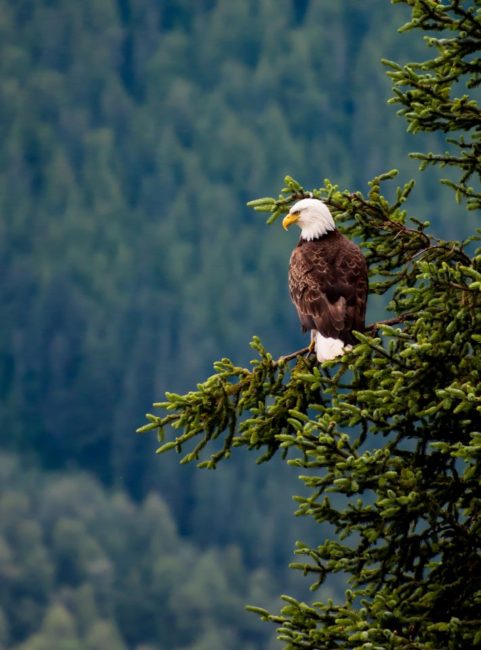An ordinance requiring buffers around eagle nests may soon be removed from Juneau’s land use code. To locate the nests, city enforcers rely on federal biologists, but years of federal cuts have made them scarce.

The current rules bar development within 50 feet of an eagle’s nest. That increases to 330 feet during the six-month nesting season and extends to 350 feet for nests on public land.
In a staff report, city officials say identifying nests has become harder.
“We were having increasingly more difficulty identifying where the nests were, sometimes we would know, sometimes we didn’t,” said Teri Camery, a senior city planner. “And so we were enforcing it so inconsistently based on whether we had information about a nest or whether we didn’t.”
Biologists with the U.S. Fish and Wildlife Service have long helped the city find and plot eagle nests. But as the eagle population increases, it’s the biologists who have been dropping off.
“A few years ago we had over 20 people here in Southeast Alaska in the Juneau office. These days we have about five,” said Steve Brockmann, Southeast Alaska coordinator for U.S. Fish and Wildlife Service. “Our staff declines have been a direct result of budget tightening at the national level.”
In Juneau that means there’s only one raptor expert left — and he’s responsible for all of Alaska.
The Trump administration’s proposed budget continues the cutting trend, including shedding 324 full-time jobs across the agency.
So with the city planning staff basically flying blind, Camery said it’s not good policy to keep the ordinance.
“The key issue is enforcement,” she said. “We can’t enforce an ordinance if we don’t have the basic information on where the eagle nest is.”
It’s not the first time the city has proposed eliminating its eagle buffers. The planning commission was against a similar effort about five years ago. The Assembly heard public outcry and it stalled in 2012.
But the the planning commission’s composition has since changed. It unanimously backed it in August.
The Assembly will have a public hearing and likely vote at next month’s meeting.
Even if the Assembly scraps eagle buffers, the birds remain protected under federal law. An act of Congress 77 years ago makes it a crime to disturb eagles, their nests or eggs without a federal permit.
Bald eagles were never threatened or endangered in Alaska.
“We do really have really an awesome eagle population in Southeast Alaska,” Brockmann said. “It’s one of the most dense and largest nesting populations on planet Earth and we’re proud of that. Part of the reason is because there’s been effective management including the constraints on development around eagle nests that you see in the Juneau area.”
And in anticipation of the rule change, the city’s permit department is working on pamphlets to encourage voluntary measures to protect eagle nests.
